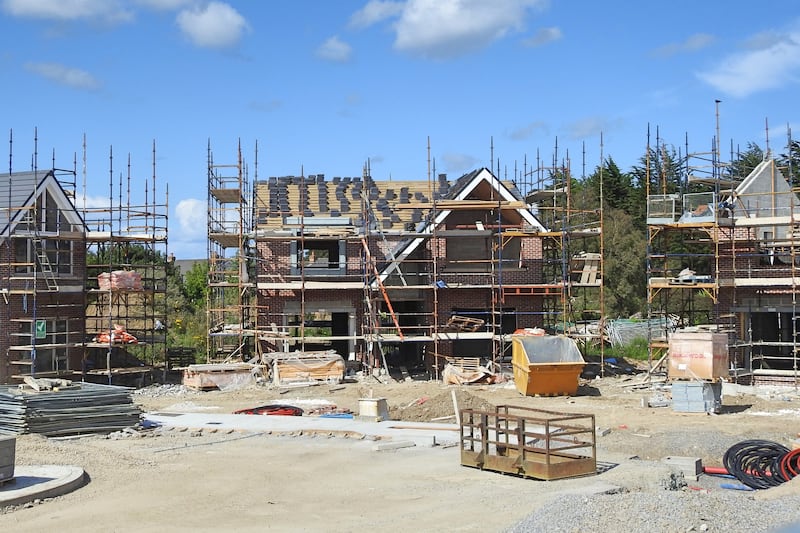In the summer of 1995, I took one of the most eventful journeys in my life when I interrupted our family holiday in Connemara for a critical business trip. I boarded the Galway bus and then another on to Shannon, flew to New York and finally on to Phoenix, Arizona.
My destination was the headquarters of Motorola satellite communications. My family understandably were quite unhappy with the interruption. The Phoenix flight was also delayed by several hours, overbooked and I was very nearly denied boarding. I was exhausted arriving to my hotel at 5am, instead of the prior evening.
Over a short 8.30am breakfast with Motorola, I signed a long-negotiated but game-changing contract for my company, Iona, and then headed straight back to Connemara, arriving to my family the next day.
The contract was for Iridium, an initiative to build a global communications network using low-orbit satellites. At a time when mobile phone networks were in their infancy, Motorola and its partners believed that a planetary mesh of satellites could instantly offer a cellular network anywhere in the world, including, in particular, for parts of the world then having a poor telecommunications infrastructure.
Iona supplied the foundational software to interconnect the three Iridium global network management centres in Phoenix, Rome and Honolulu. Because of the high profile of the project, it was an immense coup for our small Irish company against substantial brand-name competition, and subsequently created numerous opportunities for us with other mission-critical projects worldwide.
Iridium, however, filed for Chapter 11 bankruptcy in August 1999, defaulting on $1.5 billion business in loans.
Its network had become operational the prior November, and its CEO and 28 member board of directors had projected a growth rate of at least 50,000 new users per month. In the event, it only had 20,000 users in total by that August and so broke banking covenants with its debt providers.
Various studies of the failure of Iridium have blamed the cost and physical bulk of its mobile handsets, and the competitive acceleration of terrestrial cellular networks.
Twenty-five years later, Elon Musk’s SpaceX is building Starlink, likewise a global communications network using low-orbit satellites. It primarily offers internet wifi hotspots, rather than direct connections to mobile phones as in Iridium (although Starlink promises a “direct to cell” service from next year).
Iridium used 10 Mbps microwave beams between adjacent satellites in its constellation, whereas Starlink today uses infrared lasers up to 100 Gbps – 10,000 times the bandwidth of the Iridium links. Iridium deployed 66 satellites, while Starlink is currently operating 7,000 and expects to grow this to at least 12,000 and maybe even to 34,000 based on SpaceX’s analysis of the expected global demand for its infrastructure.
[ Getting insurance in space should not have to be rocket scienceOpens in new window ]
But Starlink may soon not be the only game in town. Jeff Bezos’s Amazon already runs much of the internet’s infrastructure with its web services and worldwide data centres. Adding a satellite constellation would allow Amazon to strengthen its competitive position with direct high-capacity connections to its infrastructure, bypassing any need for intermediary internet service providers.
Amazon thus founded its Kuiper satellite subsidiary in 2019, four years after Starlink. Kuiper has so far launched just two test satellites but intends to build out its constellation of 3,000 satellites from early next year. It must have at least 1,600 in orbit by July 2026 to meet its commitments to its US regulator (the Federal Communications Commission).
Much of the technology appears broadly similar to that of Starlink although different frequency bands are used to connect the constellations to the ground terminals, with Kuiper using a higher bandwidth but potentially being more susceptible to weather conditions.
Starlink is estimated to have cost about $10 billion to date, and maybe $20 billion for a dense constellation. Nevertheless, SpaceX has been able to keep the Starlink costs comparatively low by largely building its satellites in-house and using its own rockets to launch the satellites.
Kuiper’s costs are expected to be significantly higher in comparison, both due to satellite manufacturing costs and contracting with multiple launch companies (including Bezos’ own SpaceX competitor, Blue Origin).
Some analysts expect Starlink to grow its current 2.7 million subscribers and $6.6 billion in revenue to at least five million subscribers by 2027 and circa $32 billion in revenue. An optimal analysis for Kuiper projects 100 million customers at $30 per month, and thus $36 billion in annual revenue.
In both projects, satellites are an ongoing cost. Kuiper expects a seven-year satellite lifespan. So once fully operational, about 450 satellites will need to be annually replaced. Starlink’s current satellites only have a five-year span. Once its 12,000 satellites are operational, 2,400 of them will need to be annually replaced at an estimated annual cost of $8.2 billion.
The project lead for Kuiper was hired in 2018 from SpaceX and there were rumours that he was fired for being overly cautious compared with Musk’s impatience. Some analysts are now speculating that Kuiper is moving far too slowly and that there are too many challenges ahead to progress from today’s two test satellites to meeting the FCC requirement of 1,600 in 20 months’ time. Even with Amazon’s deep pockets, Kuiper’s high costs may be more than its investors wish to bear.
- Sign up for Business push alerts and have the best news, analysis and comment delivered directly to your phone
- Find The Irish Times on WhatsApp and stay up to date
- Our Inside Business podcast is published weekly - Find the latest episode here
















